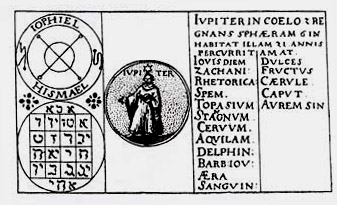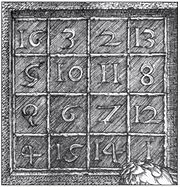
It occurred to me that for the first time in his career as a novelist Dan Brown was in the position to be extremely capricious, even to the most ridiculous degree. Remember,
Da Vinci Code was his first success, quite unexpectedly.
Deception Point and
Angels and Demons only became widely known after Dan Brown became famous for his third novel. Now, why not use this opportunity to pick an ISBN that would carry some symbolic meaning? Wouldn't that be a nice touch to what Dan Brown's publisher hopes to be a highly successful book?
One must keep in mind that ISBN numbers cannot be chosen randomly. Every publisher is assigned blocks of ISBNs, all of them usually contain similar sequences. So, Dan Brown would have to get quite creative. Still, it did not take long for me to discover one very striking fact. If you add up the digits in the ISBN of
"The Lost Symbol" you get the number
34:
0+3+8+5+5+0+4+2+2+5=34Anyone familiar with numerology will immediately notice that the universally accepted lucky number
7 can be based on
34: 3 + 4 = 7. Also, according to some,
34 "signifies realization of the man." You can easily find more random minutiae connected with this number (e.g. in Dante's Commedia there are 34 cantos dedicated to Hell, while Purgatory and Paradise each get 33 cantos). But here is the most interesting fact. The numbers 1 through 16 can be arranged in the so called Jupiter's Table, a magic square where every line of numbers has the sum of
34:
16 3 2 13
5 10 11 8
9 6 7 12
4 15 14 1
There are variations in the way the numbers are oriented in the square. Of course, "serious" numerologists use Hebrew letters with their numeric values.

d
Amulets containing the Jupiter table are supposed to bring wealth, prosperity etc. As far as I can tell, there are many Masonic amulets of this sort. One was supposedly owned by Joseph Smith, the founder of Mormonism.
A word of caution, however. When you write
34 using Roman numerals you get
XXXIV, which in reverse reads
VIX (XX), meaning "hardly", "with difficulty", "barely." Even worse,
34/2 = 17 and
17(XVII) has been feared for quite some time because when you rearrange the letters you can get
VIXI - "I have lived" (meaning "I am dead"), therefore the number
17 is often superstitiously avoided. What will happen with Dan Brown and his writing career? Time will tell, but let's hope that Dan Brown will not find himself singing Charley Patton's highly numerological "34 Blues":
"I ain't gonna tell nobody,
'34 have done for me
I ain't gonna tell
nobody what
'34 have done for me
Took my roller, I was broke as I
could be."UPDATEBecause I made this discovery when the book was not available yet I had no idea that Dan Brown uses this exact Jupiter Square as a clue in his book! All of a sudden, the number 34 encoded in the ISBN does not look so coincidental... Here is a fragment of Albrecht Dürer's Melencolia I described in the novel:

I will add something else here... Some folks are saying that the complete ISBN includes 978. It looks like this is simply a translation of the number into a different ISBN standard (ISBN-10 to ISBN-13). In fact, it is difficult to find a book that does not have 978 as the first digits of ISBN-13, thus rendering this part of the ISBN unchangeable.
See also:
Knights Templar symbols.

 d
d





